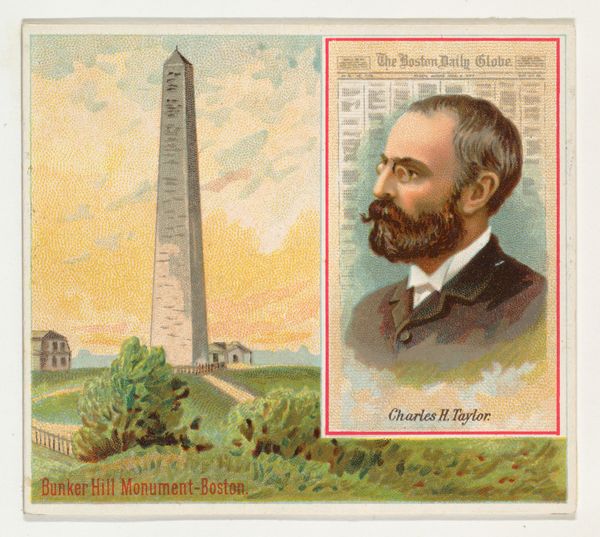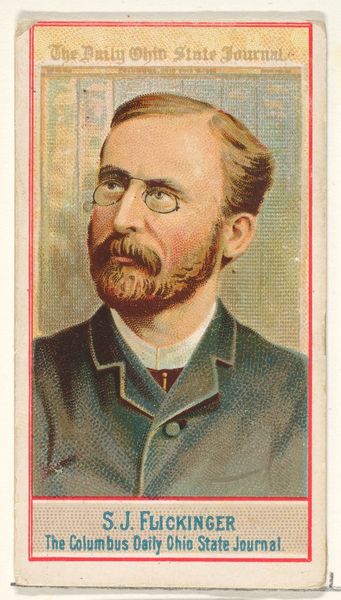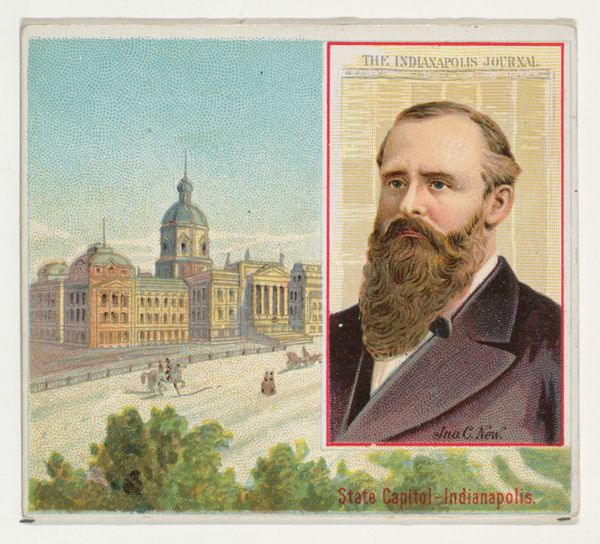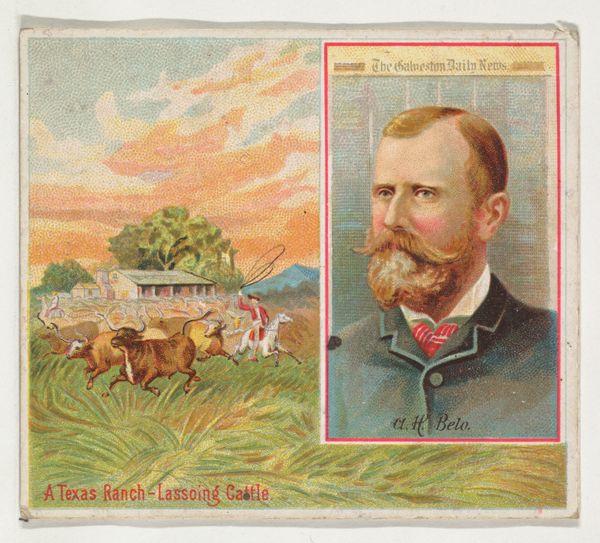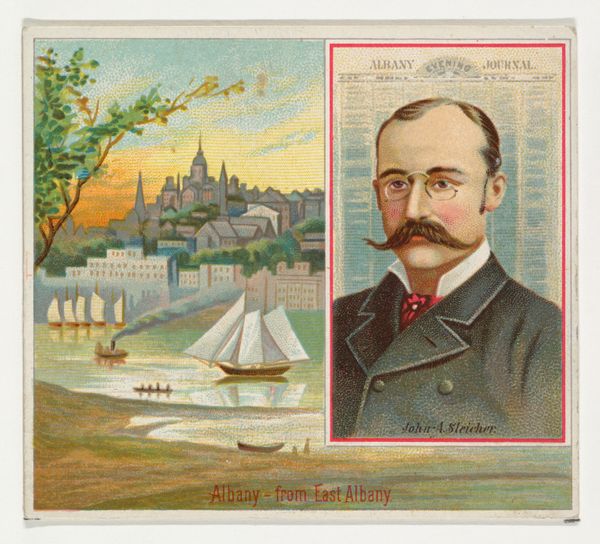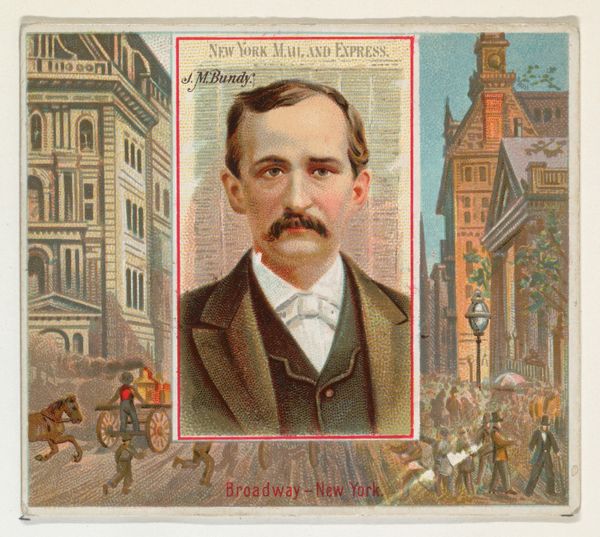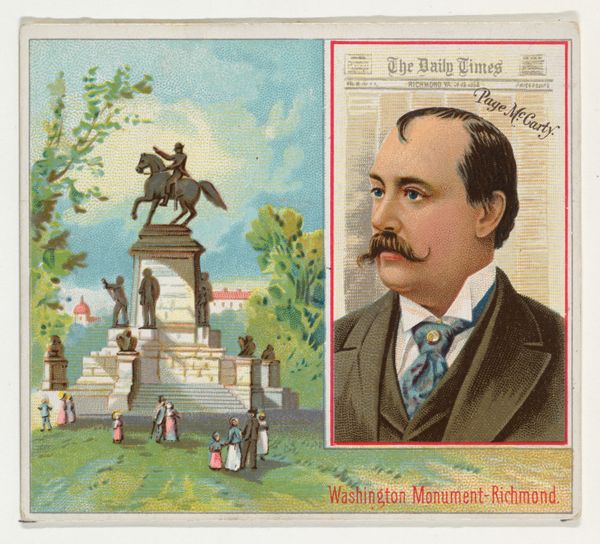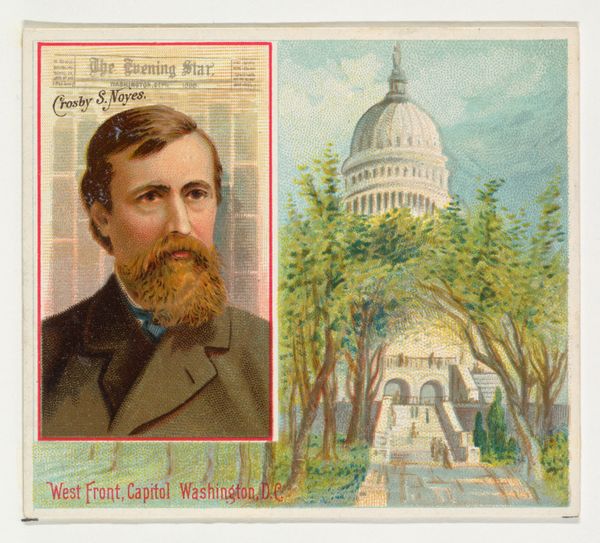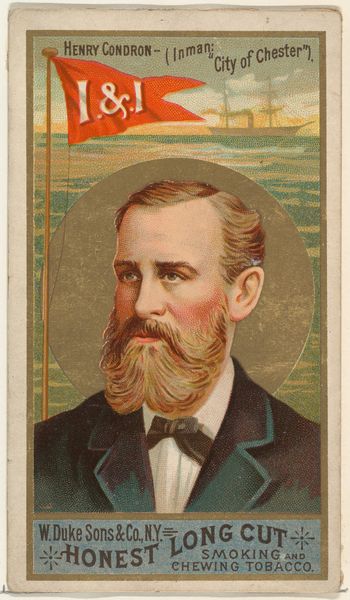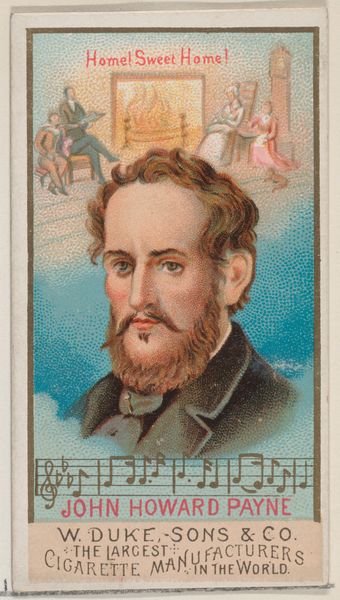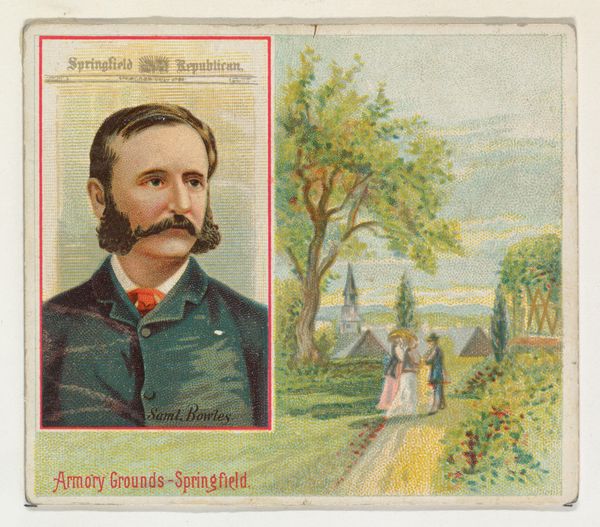
S.J. Flickinger, The Columbus Daily Ohio State Journal, from the American Editors series (N35) for Allen & Ginter Cigarettes 1887
0:00
0:00
drawing, print
#
portrait
#
drawing
# print
#
landscape
#
men
#
cityscape
#
watercolour illustration
#
genre-painting
#
academic-art
#
watercolor
#
realism
#
building
Dimensions: Sheet: 2 7/8 x 3 1/4 in. (7.3 x 8.3 cm)
Copyright: Public Domain
Editor: This is "S.J. Flickinger, The Columbus Daily Ohio State Journal," a print from 1887 by Allen & Ginter Cigarettes, part of the American Editors series. It features a portrait alongside a landscape view of what I assume is the Ohio State Capitol building. It’s a really interesting juxtaposition; almost like a split screen of that time. How would you interpret this, especially considering its origin as a promotional item? Curator: The very existence of this piece tells us so much about the burgeoning media landscape and the ways industries used visual imagery to gain traction in the public sphere. What do you notice about the figures selected for this series? Editor: Well, the title says "American Editors," so I assume it's showcasing prominent figures in journalism at the time, men shaping public opinion...like a visual who's who of media power. Is there something about that power dynamic that's key here? Curator: Precisely. These weren't just portraits, they were endorsements. By associating their product with influential editors like Flickinger, Allen & Ginter tapped into a cultural fascination with authority and progress. Consider how these images circulated: mass-produced and inserted into cigarette packs. How does that change our understanding of portraiture and its purpose? Editor: It becomes more democratized, I suppose. Art normally reserved for the wealthy is now available to the masses, although linked to the consumption of cigarettes. So it's accessible but also very much tied to a specific agenda. It definitely makes me consider the messages inherent in everyday imagery, and the powers behind them. Curator: Exactly. The “public role of art” you are witnessing here took place far outside any conventional art museum setting. The intersection of commerce and civic life in these unassuming cards unveils the socio-political function of even seemingly innocuous imagery. This type of promotional portraiture subtly molded perceptions and cultivated public sentiment towards institutions like newspapers and, by extension, the brands that aligned themselves with them. Editor: That’s given me a lot to think about. I'll never look at vintage ads the same way again! Thanks for the insight.
Comments
No comments
Be the first to comment and join the conversation on the ultimate creative platform.
